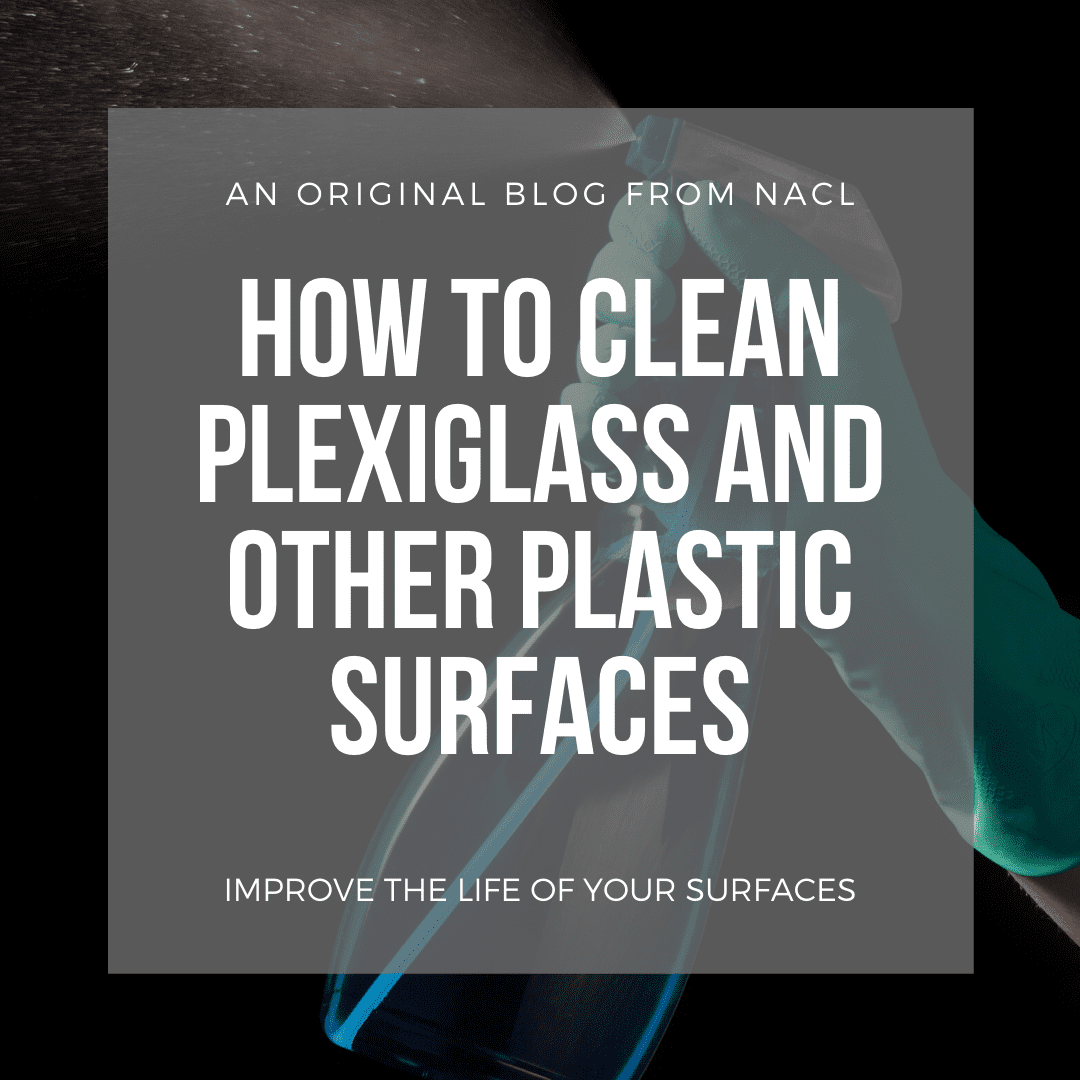How to Clean Plexiglass and other Plastic Surfaces
Our “new normal” as much as that phrase has become cliché is going to involve many Plexiglass and other polymer-based windows to prevent virus spread in public spaces. Whether used for windows, sneeze guards, or barriers at retail checkout areas, acrylic (also known as PMMA or Plexiglass) offers many advantages over traditional glass windows. Acrylic is clearer and has higher visible light transmission that standard architectural glass. Along with superior clarity, acrylic is half the weight of glass while being 17 times more impact-resistant than standard plate glass. Here at NACL we have over 45 years of polymer coating experience, and one of the biggest steps to providing quality coated polymer optics is cleaning the substrates to an appropriate level. To use another cliché, “now more than ever” properly cleaning your polymers can ensure a long usable life.
Acrylic like virtually all other polymers is prone to abrasion, so prior to cleaning you should determine the best type of cloth and cleaning agent to use when cleaning your acrylic surface. Additionally, it is good to know if your acrylic surface has a hardcoating applied to it. Hardcoating will help create a barrier that resists abrasion and chemicals and makes the cleaning process a little simpler.
Depending on how dirty the surface is and what the contaminant is, a simple household spray bottle with clean (preferable filtered) water and a non-abrasive cleaner should work well. If your acrylic is not hardcoated you should avoid any abrasive cleaners such as alcohol and ammonia. Ammonia specifically will breach the surface of raw acrylic and leave it looking frosted or cloudy. Most traditional glass cleaners have ammonia as well as other hydrocarbons and should be avoided as well. A simply made solution with water and mild dish soap. Should be more than sufficient to clean an acrylic surface with little to no issues.
It is always advised to use a soft, clean,
microfiber cloth that is non-abrasive. Before you begin cleaning, lightly wet
the cloth and continue wetting the cloth and substrate to so that you do not
transfer and foreign particles (dirt, dust, or particulate) to other surface
areas of the acrylic or polymer substrate.
With these tips it can be relatively easy to keep an acrylic surface or other
plastic based surface clean and functional for years to come.






